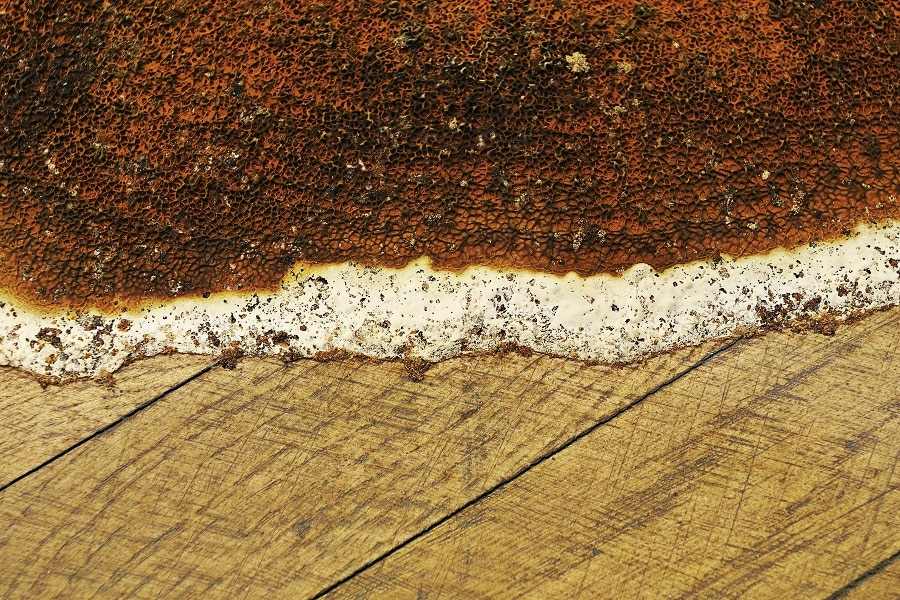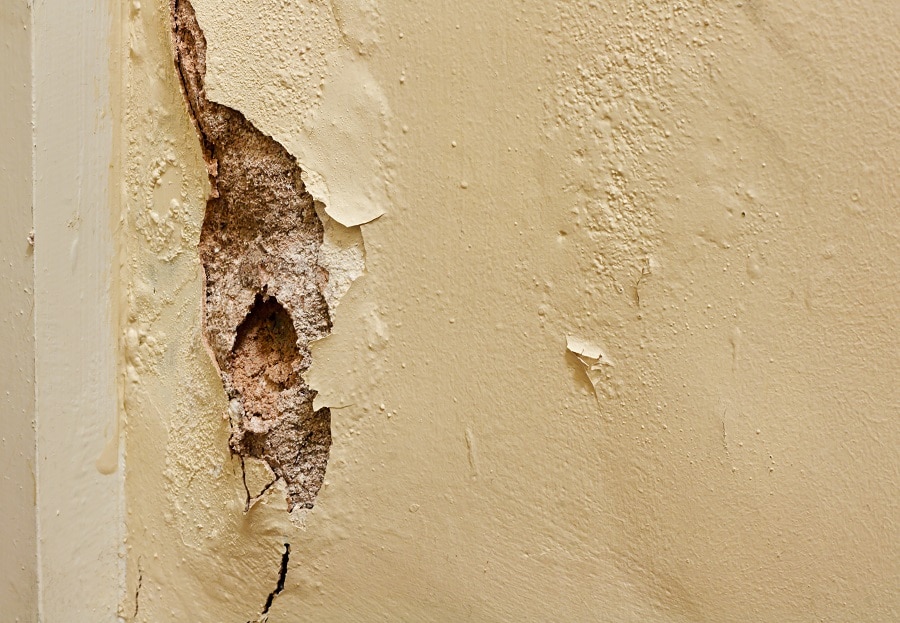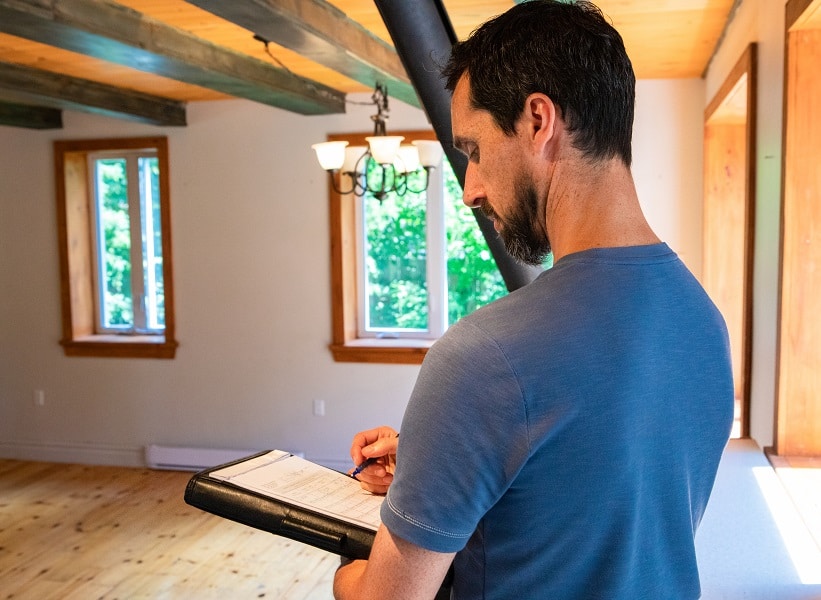What is dry rot?
Wood-decay fungus is often called dry rot. Once the surface of the Wood is broken down by the Sporocarp fungi, it gives way to Mycelium that consumes the wood and dries it out effectively; the end result is a fine dust and dry rot bloom. Dry rot is a type of fungi that starts the rot process before penetrating the surface of timbers. Dry rot spores can be present in the soil and already affected old woods.
This means that even treated wood can be re-infected by dry rot if it is damp enough (i.e., below 15 percent relative humidity). While Dry Rot can be harder to spot, it is potentially more damaging than wet rot. It often occurs where you’re not looking. It could be under the plaster, beneath your floorboards, or even in your loft. This is why it is important to know the signs and symptoms of dry rot and to have it handled fast.
Our Guarantee
- upto 30 year guarantee
- customer focused team
- 20 years combined experience
- portfolio of satified customers
- attention to detail
- Construction line accreditation
- public liability insurance
- CHAS accreditation
What is the difference between dry rot and wet rot?
These specific types of dry rot use different species of spores, meaning that they look different from wet rot. The biggest difference between dry rot and wet rot is the moisture that wet rod needs in order to spread. Wet rot spreads quicker, which means it can consume more of your property much faster than dry rot. This is because it uses the capillaries within timber rather than mycelium that typically forms the basis of a Dry Rot infestation. Dry rot is the most severe type of decay of fungus in a property, spreading too much of the structural timber and damaging it whether wet or dry and causing a greater risk of structural damage throughout a property. The consequences of wet rot fungus are not that serious, the decay is confined to areas where the timber becomes and remains wet.
Call Our Sussex Damp Experts team now for quote, consultation and advice:
Call on 01273 257 765.
What are the causes of dry rot?
Dry rot is caused by different species of fungi. The most commonly found in the Uckfield is Serpula Lacrymans. it can spread from your home’s walls to the floors, and even the plaster is not fixed soon enough. It can have a major negative impact on the structural integrity of timber, and also the integrity of your home. Dry rot attacks when moisture levels are too high in your timber. This attracts the fungus that is going to use this moisture to produce nutrients. The expression “dry rot” is used to contrast between “wet wood” and “dry wood rot.”
Wet timber fodder on a dry rot. These hyphae need only 20% moisture to survive, while fungal spores need more than 30% moisture to generate hyphae after this. These cells can grow into a fungal body called a mycelium, which also spreads outward to find more wood in stone and brick. The fungi will remove hemicellulose, cellulose, and H2O, leaving behind a weak structure of the original wood. You need an expert to examine your property and determine whether your rotting timber is a result of dry rot or a different type of fungus. This is really important since the cure for these damages can differ based on the actual cause.

The dangers of dry rot in Uckfield
Dry Rot Effect on your Property
Dry rot can cause irreparable damage to wood and other materials in your home. It will spread along the structural timbers inside your property and begin to break them down. Extreme conditions may cause your home or appliances to fail. It won’t attack the mortar between your bricks or stones, but it can travel through it. This is why regular checks are important.
Dry Rot is one of the most destructive and dangerous pests found in homes, which requires urgent treatment. It is important to call a Dry Rot Expert immediately before your home sustains serious damage. If you think that you might have an issue with dry rot or dampness in your home, check out Sussex Damp Experts today.
Dry Rot Effect on Your personal health
It is not the fungus that causes dry rot that is harmful. The existence of dry rot can cause a number of health problems. This is particularly hazardous for the adults, children and people with respiratory conditions.
What are the Warning Signs of Dry Rot?
The sooner you find dry rot, the less time and money you need to waste on treating it. A full assessment by a professional is recommended if you experience any of the following signs and symptoms.
-
The beginning of the dry rot cycle
The spores of the dry rot fungus are carried by the wind across large distances. The insect cuts small holes into the wood and eats the sap that comes out. They create hyphae on and inside of timber, as long as the wood provides sufficient nutrients for their growth. Spider web-looking collections called mycelium will join up as the hyphae grow and feed. Mycelium may be white or light grey. Mycelium is mostly found between property’s bricks, mortar and plaster and can also try and spread into timber greatly.
-
Your timber is damaged.
You are likely to start noticing rot issues if your timber begins to dry out. This may at times make your wood fall. You will probably note the dry rot blacken the color of your wood. Cuboidal cracking on walls can be caused by a multitude of dry rot. The Cuboidal Cracking is a natural timber feature that affects all timber species and can break the timber up to 50 mm width. At its worst, the fungus rots the timber, causing the white fungal hyphae to grow. Hyphae can look like cobwebs and is a common symptom of dry rot.
-
Your timber will smell.
If your wood is infected by dry rot, it will have a different, fungal smell. This can occur even if you can’t see a dry rot outbreak. Despite the odor, dry rot may not yet begun to grow.
-
Your timber will have fungus bodies on it.
This is the final stage of dry rot and the most noticeable. Mushroom-like fruiting bodies will begin to bind themselves to your wood. They occur when dry rot can no longer feed on the wood, so the fungus has to churn out spores instead.
-
Your timber will have spore dust.
Spores related to dry rot do not just occur in timber affected by dry rot. However, if splotches of dust rusty color accompany dry rot spores, it can be a sign of dry rot. In the last step of the dry rot stage, fruiting bodies yield spore dust.
Dry Rot Treatment in Uckfield

Only when moisture levels are over 20 percent will a dry rot infestation occur. Controlling moisture levels in your living space/property is the first preventative step to eradicating the presence of the fungus. You are now in charge of the moisture levels. We advise you to commission an expert in order to treat dry rot.
Any contaminated timber removal and any repair work is handled by Souther Damp Proofing. A professional should remove any infected timber. Similarly, a professional damp proofing expert will know the exact treatment required. While some treatments are instilled into the timber, others on the timber’s surface. There are also several preventative treatment options available. Such substances require accurate concentrations which, if inhaled or ingested inappropriately, may have harmful side effects.
Your timber may require Boron roads injection from a professional. Boron is a hazardous material, hence damp proofing experts wear the protective clothing. Our damp proofing team will find and fix your leaks and resolve any dry rot damage. Dry rots can lead to serious complications if left untreated for a long time. If left untreated, dry rot can expand and cause great damage. Our high-performance products and extensive experience allow us to efficiently address your damp proofing problems.* Please don’t delay. Call today 01273 257 765, for a free survey, and effective treatment of dry rot.
How can you prevent dry rot damage in Uckfield?
The elimination of dry rot is the first treatment process. Most typically, a rot invasion occurs near an area that has a high amount of moisture and where the wood has enough space to dry and shrink. Here are several techniques that will save them from forming: Make sure there are no leaks in your house. Provide proper, sufficient ventilation.
Ventilate correctly and envelop the attic. Properly ventilate crawl spaces. Seal basement and crawlspace floors to reduce ground moisture. To ensure the water is correctly guided, check all flickering walls and roofs. Keep the sinks and downs clear. It’s a very good idea to check your pipes and heating system for leaks when using a wet system Because of the moist conditions required for dry rot fungus to feed and germinates, the best way to reduce the risk of dry rot is to minimize moisture levels. If you have a leak, plugging the leak can help reduce further damage to the house.
Speak to a Dry Rot specialist in Uckfield
We are ready to cope with any damp or dry rot issues involving your property or house. We’ll do a full steam survey of the property and give you a free estimation before we start any work. For some years, we have assisted thousands of Uckfield homeowners with their damp problems, and we will support you as well. To book a free survey and quote, call us now 01273 257 765. A qualified Plasterboard dry rot expert will diagnose your home to determine what the extent of the infestation is We will always give you our best and impartial advice on treatment that is right for your needs.

We have a complete list of expert surveyors who carry out all types of surveys and assessments, from pre-purchase surveys to full structural repairs. Dry rot is a long term problem, and can get worse if left unchecked, if you notice any signs of damage on your fence, it is better to contact our contractors right away. Sussex Damp Experts will be able to help you no matter what the nature of your damp issue is, email or call us on 01273 257 765
FAQ
Should dry rot be restored or replaced?
A certain level of dry rot can be repaired, but whether the damaged areas provide the house with structural stability, such as beams and joints, or even flooring, it is not recommended. Replace the wood in such a situation instead of repairing it. Whether you restore or rebuild the wood, it is better if you avoided the conditions that caused the rot to flourish in the first place or risked it coming back. Your roof leaks, broken gutters, or downspouts, plumbing leaks or insufficient ventilation should be inspected when considering a roof moisture accumulation You may consult a specialist to find and repair the problem.
Will you be able to treat my Dry Rot problem effectively?
With our expertly trained surveyors and specialists, a dry rot problem can be treated, rectified, and your timber can be protected for the future.
How do I discover how far Dry Rot has spread?
If you have traced the dry rot fungus quickly or not, a professional will identify the source of the problem. They will be able to trace the fungus in the different masonry and plaster from which it has spread.
How much can dry rot widen?
Dry rot spores can spread in anyplace with the right environmental settings. The reason is that they are carried in the atmosphere. If your timber has a moisture content of around 20%, and if it is in the open air, these conditions are attractive to dry rot fungus. This suggests that fungus groups can disperse to multiple materials. If dry rot is spreading across masonry and plaster, and if it reaches more timber to feed off where the timber is moist. It can widen further. Dry rot fungus needs five things to survive: the right temperature, drive rot spores, moisture, oxygen, and the food source. In any home in Brighton most of this is present.
Will dry rot stretch?
What should I do to control dry rot?
First identify the reason for your timber moist before solving it. A different treatment shall be given if the reason for your timber moisture is outside.
What are the effects of living dry rot unchecked?
Dry rot is the most insidious form of moisture that can infest property and cause permanent damage to the building if left untreated. Sometimes, once the harm is already done due to the places in which the problem is likely to be the presence of dry rot does not come to light.
Is dry rot stringent?
Dry rot can be particularly common in wooden properties, so it is essential that early signs of dry rot are identified before the damage becomes too severe.
How am I meant to know if I have dry rot?
A timber survey will assess how your timber is affected by being exposed to moisture. Later on, fruiting bodies and mycelium will be noticeable in the drive rot life-cycle.
Where can dry rot grow?
Dry rot attacks and rots timber that’s been in contact with water for a long period of time. Although it can often be mistaken for other problems in its early stages, it is important to seek advice. In every structure, both old and new, dry rot can grow. The reason being that it is caused by moisture and wetness that happen anyplace. Dry rot can be caused by leaks or weather, meaning the type of property does not affect it.




